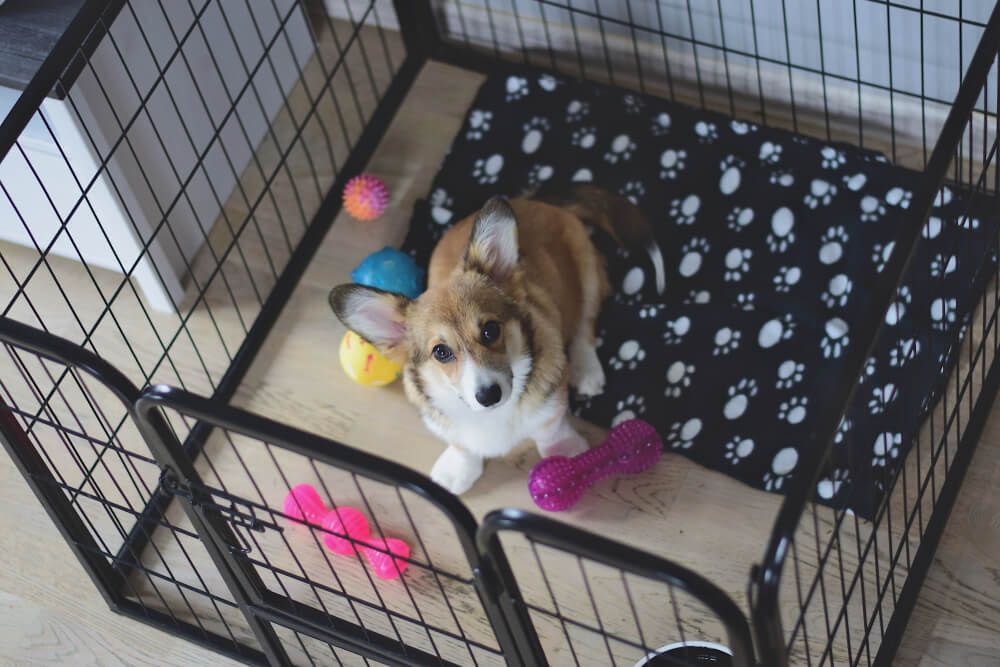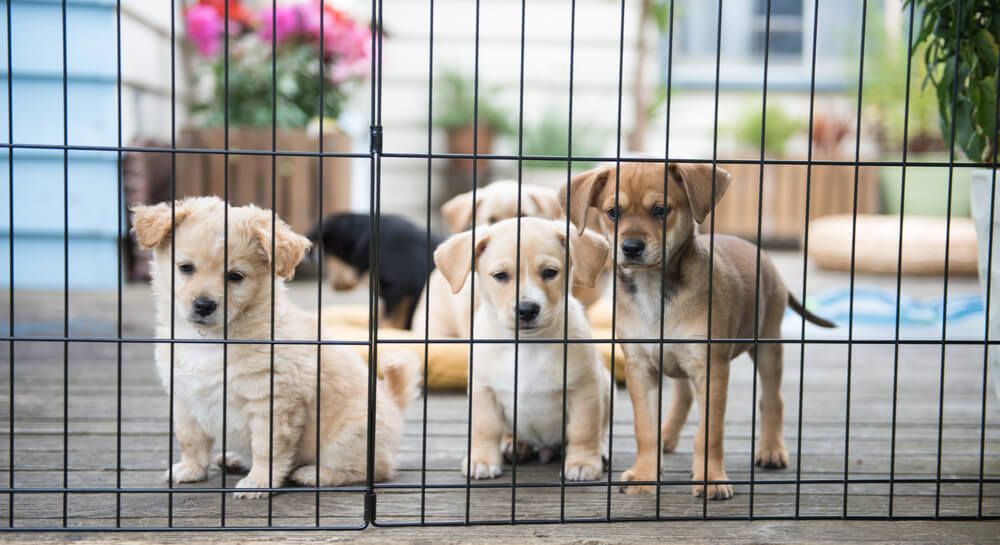It’s really exciting when you bring home a new puppy and can spend time playing and making a fuss over them with lots of cuddles! This is also the perfect time to start training your pal – and crate training is an important step to take together.
Why crate training?
Crate training is an excellent way to create rules and boundaries for you and your pup. Using a crate can help immensely in many areas; it can help your puppy feel safe and secure, and give them a space to sleep and stay in for short periods.
6 Things To Remember When Crate Training A Puppy
1. Choose the right crate for your dog

There are many types, shapes and sizes of crates available so make sure you choose the correct one for your puppy, including remembering to allow room for growth!
Make sure they have enough room to move around a little, but not too much, and can stand up and lie down comfortably. If you see them struggling to get comfortable, it’s time to adjust or get a larger crate. Try not to make the crate too large either in case they think some of the crate is toilet space - you don’t want to undo any toilet training you have started!
2. Think about crate location
Place the crate in a location where your puppy spends a lot of time. Don’t put it in another room and walk away from them, this will make them feel insecure and abandoned and associate this feeling with the crate!
Instead, play with them and make a fuss when they are in the crate and being good. Put their favourite blanket or toy inside for some familiar surroundings, but remember to keep it clean – puppies may have accidents if they are also being toilet trained!
3. Give your pup time to explore
Enticing your puppy into the crate may be a challenge to start with, but if you make it fun they will quickly associate the crate as their own space and feel calm and comfortable.
Create a positive association by allowing your pup to explore the crate on their own. Leave the door open, but don’t force them to enter – it’s natural for your pet to be hesitant about entering for the first time! Coax them into the crate in a friendly tone, and perhaps entice them with some treats, praising when they actually enter.
Soon your puppy will be relaxed and go in and out as they please. But always keep the doors open until you know they are really ‘at home’.
4. Encourage them with food
Once your pup is going in, or staying near to their crate without encouragement, you can start giving them meals inside the crate. When they are comfortable with this, begin closing the door while they’re eating, but be sure to open it again when they’re finished.
Slowly increase the time your puppy spends inside the crate or cage with the door closed. They will soon accept that sometimes the door is open and sometimes it’s closed.
5. Slowly increase the time you’re away from the crate
If your puppy is not showing any signs of distress when spending short periods of time in their crate, you can extend the time they spend inside with the door closed.
Call your pup into the crate with your normal ‘cue’ word and an encouraging treat. If your puppy enters without showing any signs of stress, give them another treat and close the door, praising all the time. Stay close by and in sight, then let your dog out after a few minutes.
After some repetition, you can lengthen the time you leave your dog in the crate and start to move out of sight for short periods at a time. Gradually increase this time, so you can be confident if you need to leave the house for a short period.
It’s important that your puppy does not associate their crate with a negative situation. So don’t only put your dog in the crate when you are leaving the house; encourage them to go in the crate at different times of the day. This will quickly become normal practice.
6. What if your pup whines?
If your puppy begins to whine, don’t let them out of the crate until they stop, otherwise they may associate whining with being let out!
Whining can also be a sign that you have moved a little too quickly and your pup isn’t settled enough to be left. If this is the case, take a few steps back in your training, and shorten the time you leave your puppy in the crate
Helping Your Pup To Love Their Crate
The first few months of a puppy’s life are very important for training and learning - using an ADAPTIL Junior Collar can help to provide a little extra comfort and support at this time. ADAPTIL Junior constantly sends “comforting messages” to help your puppy feel the same reassurance and security with you as they did with their mother. ADAPTIL Junior also helps your puppy learn better and faster so they can develop into a confident, well-trained adult dog.



